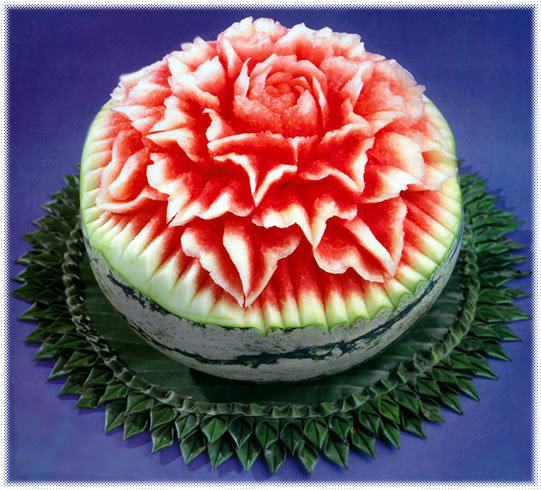 vegetable planting vegetable planting best vegetables to grow Sure, green vegetables are nutritional powerhouses. But don’t neglect their red, orange, purple and yellow cousins. Bright is beautiful when it comes to vegetables: particularly if your optimal-health goal includes boosting your immune system, preserving your eye sight and reducing the risk of cancer. That’s because the vitamins, minerals and all-natural chemical components in vegetables help do all of this home vegetable garden, vegetable planting calendar, healthy food recipes .. and more! The “more” includes vegetable planting and lowering your risk of heart disease: a feat linked to vegetables’ rich fiber content. Dr. Shamaeizadeh notes that vegetables are similarly low in calories and fat, another important component of a heart-healthy diet. Here’s another reason to eat your veggies: New research reveals that “stroke is the third leading cause of death and the most common cause of disability in most developed countries.” (Lancet 2006;367:320.) The good news? Increasing your daily consumption of nutrient-packed vegetables can substantially reduce your risk of developing a stroke. Dr. Shamaeizadeh and nutritional experts from around the world recommend eating a minimum of five vegetable and fruit servings per day and the brighter the better. Why? Because the brighter the color, the more phytonutrients a vegetable contains. Phytonutrients and phytochemicals, two terms that are used interchangeably, are plant-based substances that feature disease-fighting attributes. The most common are terpenes (essential oils), carotenoids (fat-soluble plant pigments found in vividly colored fruits and vegetables), phytosterols (compounds found in the cells and membranes of plants) and limonoids (found in citrus peel). Color Guide When it comes to vegetables, color isn’t merely skin deep. Check out this brief color guide highlighting the benefits of certain hues. Red: Although technically a fruit, many people consider tomatoes their favorite “veggie.” Tomatoes are rich in lycopene, an antioxidant that prevents arteries from clogging and wards off prostate cancer. Lycopene is also what gives tomatoes their rich, red color. Antioxidants work by absorbing free radicals — biochemicals that inflict arterial damage, particularly in the heart (RèartAdvis 2006;9:6). Red-skinned potatoes, red beets, red peppers, radishes, radicchio and red onions are other winning crimson vegetable options. White: Garlic is considered both an herb and a vegetable. Did you know that garlic can decrease LDL (“bad”) cholesterol? And it doesn’t take a bushel of this pungent vegetable to do the trick: Just half a clove per day can make a dramatic impact on health. Its active ingredient the phytochemical alhem — is also present in onions and scallions (Diabetes Forecast 2004;57:25). Cauliflower is another great “white” vegetable. Its all-natural chemical compounds are linked with anticancer benefits (Heart Advis 2006;9:6).  vegetable planting vegetable planting Purple: The color purple also packs a powerful punch. Yummy selections include eggplant, purple cabbage and purple asparagus. Purple vegetables contain water- soluble plant pigments called anthocyanins. Also antioxidants, “they are probably the most important group of visible plant pigments besides chlorophyll. Apart from imparting color to plants, anthocyanins also have an array of health-promoting benefits, as they can protect against a variety of oxidants through a various number of mechanisms.” (Phytochemistry 2003;64:923-33.) Green: Chlorophyll is what gives green vegetables their vibrant shade. Among those bursting with antioxidants like lutein and zeaxanthin are artichokes, avocados, spinach, okra, sugar snap peas, zucchini and green sweet peppers (Heart Advis 2006;9:6). Lutein and zeaxanthin are linked to the prevention of macular degeneration: a condition that results in partial or total vision loss (Opt J Rev Optom 2005;142:10). Lettuce is another great green. However, some varieties have more nutrients than others. Iceberg, for instance, contains far fewer nutrients than heartier varieties. So, if you’re stuck in an iceberg rut like many people are, upgrade your lettuce of choice to a darker-green variety, such as red leaf or romaine. Orange: Carrots contain more than 100 phytochemicals, including carotenoids, which protect against cancer and eye disease. They also reduce plaque buildup in blood vessels (Diabetes Forecast 2004;5 7:25). Carotenoid intake also decreases DNA damage linked to numerous age- related diseases. In a study published earlier this year, researchers noted that a combination of carotenoids (4mg-each of lutein, beta carotene and lycopene) — obtained through a well- balanced diet provided optimal DNA protection (Am J Clin Nutr 2006;83: 163).Carrots are also rich in beta carotene. In fact, it’s what gives these root vegetables their rich, orange hue. In addition to its protective effect on DNA, long-term beta carotene supplementation may “significantly reduce the risk of developing Alzheimer’s disease.” (Fam Pract News 2004;34:57.) Other health-boosting orange vegetables include sweet potatoes, sweet peppers, acorn squash and pumpkins.  Yellow Yellow isn’t mellow when it comes to promoting health and fighting disease. In addition to carotenoids, yellow and orange vegetables contain natural plant pigments known as bioflavonoids. Health benefits associated with biofiavonoids include improved cardiovascular health, increased capillary strength and improved structure of the body’s connective tissues. Biofiavonoids also help to boost the immune system. That’s why doctors of chiropractic encourage patients to add plenty of yellow to their diet — including butternut squash, yellow peppers, rutabagas, yellow summer squash, sweet corn and yellow tomatoes. Go Organic To maximize the health benefits associated with vegetables and minimize exposure to toxic pesticides, opt for organic produce whenever possible. And always wash all produce: even those that were grown organically. Products like Veggie Washu by Beaumont Products, Inc. remove pesticides, waxes and other surface contaminates using 100 percent natural vegetable and fruit-based ingredients taken from citrus fruit, corn and coconut. Completely biodegradable, these products rinse clean and leave no after-taste. And Don’t Overcook Them When cooking vegetables, go easy on the heat. Cooking veggies may cleave out some nutrients. Ideally, aim for tender yet still crisp. And prepare only what you plan to eat over a maximum of two to three days. The longer you store cooked vegetables, the more they lose their magnificent nutrients (Diabetes Forecast 2005;5 8:29). Lead by Example Young children are more likely to eat their vegetables if they see their parents practicing what they preach. Lucy Cooke, Ph.D., and her colleagues surveyed 564 parents and caregivers at 22 London preschools and found the example of parental consumption was the strongest predictor of fruit and vegetable consumption among the children (Public Health Nutr 2004;7:295-302). Parents can lead by example when it comes to chiropractic care as well. Scheduling regular appointments is a great way to instill the chiropractic lifestyle in children — a drug-free way of life that focuses on preventing disease and illness. So don’t miss this opportunity to provide a good example for your children: Schedule an appointment today!
0 Comments
|
New Patient SpecialArchives
July 2024
Categories |

 RSS Feed
RSS Feed
